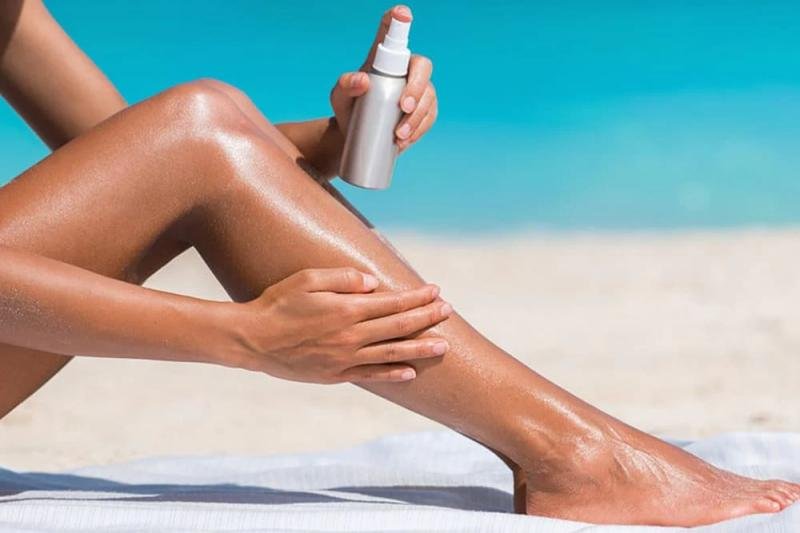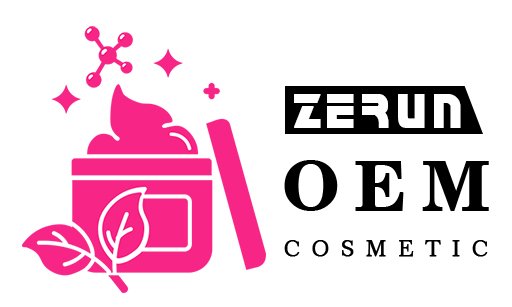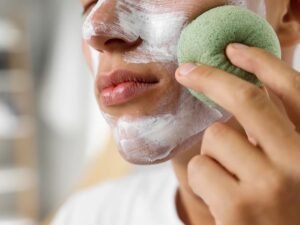When you’re at the beach or by the pool, tanning oil can be your go-to product for achieving that perfect golden tan. But does it actually work as promised? How is it different from regular sunscreen? In this guide, we’ll break down what tanning oils do, how they function, and why they’re a great option for getting a deeper, more radiant tan. We’ll also address common questions like, “Will tanning oil make me darker?” and “Does SPF prevent tanning?”
Tanning oils speed up the tanning process by increasing your skin’s exposure to UV rays. They help deepen your tan while providing hydration. However, it’s essential to use tanning oil properly to get the best results while also protecting your skin from harmful UV rays.
What is Tanning Oil?

Tanning oil is a specialized skincare product designed to enhance and accelerate your skin’s natural tanning process. Unlike traditional sunscreens—whose primary function is to block UV rays—tanning oils intentionally allow more UV light to reach your skin, boosting melanin production and helping you develop a deeper, richer tan. At the same time, they’re formulated with nourishing oils and actives to hydrate, soothe, and protect your skin as it tans.
Many tanning oils combine natural plant oils (for hydration and barrier support) with cosmetic actives (to promote melanin synthesis) and sometimes a touch of bronzer for an instant glow. Below is a typical breakdown of a high-quality tanning oil formula:
| Ingredient | Typical Concentration (%) | Primary Function |
|---|---|---|
| Coconut Oil | 30–40 | Deep hydration, antioxidant support |
| Argan Oil | 10–15 | Skin nourishment, essential fatty acids |
| Jojoba Oil | 5–10 | Balances sebum production, lightweight moisturization |
| Tyrosine | 7–10 | Melanin production booster |
| Natural Bronzers | 5 | Provides immediate, temporary tanning effect |
| SPF Additive | 0–5 | Basic UVB protection to reduce burn risk |
| Fragrance | 1–2 | Enhances sensory appeal |
| Preservative | 0.5–1 | Ensures microbial stability |
Key Data Points:
- Hydration Boost: Studies show skin moisture levels can increase by 25–30% within 2 hours of applying oil-based tanning products.
- Melanin Increase: Tyrosine-enriched formulas can accelerate melanin production by up to 15% compared to oil-only blends.
- Instant Glow: Oils with bronzer pigments can deliver an immediate tan appearance that lasts until the next wash.
By combining these ingredients, tanning oils not only help you get darker, faster, but also keep your skin soft, supple, and protected from the drying effects of prolonged sun exposure. Just remember—because they boost UV penetration, it’s best to pair them with measured sun time or a complementary SPF product if you plan to stay in the sun for extended periods.
How Does Tanning Oil Work?
Tanning oils work by making your skin more susceptible to UV rays, which triggers melanin production. While sunscreen blocks harmful UV rays to protect your skin, tanning oils let more UV rays penetrate, speeding up the process of tanning. The oils in tanning products like coconut oil and argan oil help keep the skin moisturized, preventing it from becoming dry or flaky.
Some tanning oils also contain tyrosine, an amino acid that helps increase melanin production. When applied, these oils give your skin a healthy, glowing sheen and make it look even more radiant.
Tanning oils allow more UV rays to penetrate the skin, which accelerates the tanning process. The oils in these products keep the skin hydrated and may even boost melanin production.
- Tanning Oil vs. Sunscreen: Sunscreen works to block UV rays to protect your skin from burns and damage. Tanning oils, on the other hand, don’t block UV rays. This means you can get a tan faster, but it also increases the risk of sunburn if you’re not careful. Some tanning oils do contain small amounts of SPF for basic protection, but it’s still important to use a separate sunscreen if you plan to stay in the sun for long periods.
- Ingredients That Help Your Tan: Coconut oil, argan oil, and jojoba oil are common in tanning oils because they moisturize and give your skin a soft, glowing appearance. These oils also help prevent your skin from drying out, which can happen after prolonged sun exposure. Some tanning oils also include ingredients like tyrosine to help boost melanin production, making your tan last longer and appear richer.
- Bronzers for Instant Color: Many tanning oils have added bronzers that give you an immediate tan, even before you’ve spent much time in the sun. These bronzers temporarily darken your skin, providing a golden glow that fades as soon as you wash it off, but they can be a great way to see the effect of your tan instantly.
Will Tanning Oil Make You Darker?

Yes, tanning oil can make you darker, but the degree of darkening depends on a few key factors: your skin type, how long you spend in the sun, and the strength of the tanning oil’s ingredients. The oils in the product, along with any added bronzers, will help you achieve a darker tan more quickly. However, individuals with fair skin may not darken as quickly as those with naturally darker skin, and they should be cautious to avoid overexposure.
Tanning oil can help you achieve a deeper tan, but the results will vary depending on your skin type and how long you’re in the sun. People with fair skin should use tanning oil in moderation to avoid burning.
- Skin Type Matters: If you have fair skin, you might not tan as quickly or as darkly as someone with medium or dark skin. Tanning oils enhance melanin production, but people with lighter skin tend to produce less melanin, meaning the tan may not develop as quickly. People with darker skin tones will likely see more dramatic results.
- Sun Exposure and Darkening: The more time you spend in the sun, the deeper your tan will become. However, too much sun can lead to sunburn and premature skin aging. Always use tanning oil in moderation, and be mindful of how long you’re in the sun. Reapply the oil regularly for more even results, but don’t overdo it.
Does SPF Prevent Tanning?
SPF reduces the amount of UVB that reaches your skin—delaying sunburn and slowing melanin production—but it doesn’t stop tanning entirely. Even high-SPF products allow enough UV through that, over time, you’ll still develop color.
How SPF Works:
- SPF (Sun Protection Factor) measures protection against UVB rays, which are primarily responsible for sunburn and stimulating melanin.
- UVA rays—also contributing to tanning and aging—aren’t quantified by SPF, so they still penetrate unless you use a broad‑spectrum formula.
UVB Blocking vs. Tanning Potential:
Use the table below to see how different SPF levels block UVB and how much UV “dose” remains to trigger a tan.
| SPF Level | UVB Blocked (%) | UV Dose Remaining (%) | Approx. Relative Tanning Rate (%) |
|---|---|---|---|
| 0 | 0 | 100 | 100 |
| 15 | 93 | 7 | 7 |
| 30 | 97 | 3 | 3 |
| 50 | 98 | 2 | 2 |
Note: “Relative Tanning Rate” is a rough proxy for how quickly you’ll tan compared to no protection. Even SPF 50 lets through 2% of UVB—enough over time to produce a noticeable tan.
Broad‑Spectrum Matters:
- UVB: Drives sunburn and initial melanin response.
- UVA: Penetrates deeper, boosts longer‑term pigmentation and aging.
- Only broad‑spectrum products shield you from both; otherwise, you may tan via UVA even if UVB is reduced.
Practical Tips:
- Reapply every two hours (and after swimming or sweating) to maintain the labeled SPF protection.
- If your goal is a tan with minimal burn risk, choose a broad‑spectrum SPF 15–30 and apply it 15 minutes before sun exposure.
- Combine with tanning oil by layering oil over SPF once it’s fully absorbed—this gives you hydration and controlled UV exposure.
Balancing Tan and Safety:
- Even with SPF, moderation is key: aim for short, consistent sun sessions rather than long, intense exposure.
- Monitor your skin: if you start to feel warmth or redness, reapply sunscreen immediately or seek shade.
By understanding SPF’s limits and combining broad‑spectrum protection with responsible sun habits, you can achieve a safe, gradual tan without sacrificing skin health.
What Are the Benefits of Using Tanning Oil?
Tanning oils offer more than just a deeper tan; they provide benefits that your skin will love. The hydrating oils in these products lock in moisture, preventing dry skin and maintaining a smooth, soft texture. Coconut oil, in particular, is known for its ability to restore moisture to dry skin. Additionally, some tanning oils contain antioxidants like vitamin E, which can help protect the skin from free radical damage caused by sun exposure.
Tanning oils hydrate your skin while helping you achieve a deeper tan. They contain nourishing oils like coconut oil and antioxidants that promote healthy skin.
- Hydration and Skin Health: The oils in tanning products, such as coconut and argan oil, not only hydrate but also restore the skin’s natural barrier. This prevents your skin from drying out and flaking after sun exposure, which is common with other tanning methods.
- Antioxidants and Skin Repair: Antioxidants like vitamin E, found in many tanning oils, can help combat the damage caused by UV rays. These antioxidants fight off free radicals, which are unstable molecules that can cause premature aging and skin damage. By including these in your tanning oil, your skin gets a double benefit: a tan and protection from damage.
Is Self-Tanning Bad for You?
Self-tanning lotions and oils use DHA or erythrulose to color the skin’s surface without UV exposure, making them far safer than sunbathing. However, some users experience mild irritation or uneven color if products aren’t chosen or applied correctly.
Active Ingredients & Safety
Self-tanners rely on dihydroxyacetone (DHA) and/or erythrulose to react with skin amino acids. Both are FDA-approved for topical use, but sensitivity varies by person.
| Ingredient | Typical Concentration | Known Risks | Mitigation Tips |
|---|---|---|---|
| DHA | 5–10% | Mild redness, itching (5–10%) | Patch test, choose low-DHA starter formulas |
| Erythrulose | 1–3% | Rare irritation (<3%) | Blend with DHA, moisturize before application |
| Fragrances | 0.5–2% | Allergic reactions (2–5%) | Opt for fragrance-free or hypoallergenic |
Skin Irritation & Patch Testing
- In a consumer survey, 8% of users reported mild stinging or redness after first use; 2% required discontinuation.
- Patch test on inner forearm 24 hours before full-body application is recommended to identify adverse reactions early.
Evenness & Longevity
- Proper exfoliation leads to a 30–40% more uniform tan.
- Most self-tans last 5–7 days before gradual fading; reapplication every 3–4 days maintains color without buildup.
Comparative Risk: UV Tanning vs. Self-Tanning
| Risk Factor | UV Tanning | Self-Tanning |
|---|---|---|
| Skin Cancer Potential | High | Negligible |
| Photoaging (wrinkles) | Significant | None |
| Free Radical Damage | Elevated | Minimal |
| Immediate Color Result | Gradual over days | Within 2–4 hours |
Application Best Practices
- Exfoliate and moisturize dry areas (elbows, knees) to prevent streaks.
- Use a mitt or glove to apply evenly.
- Wash hands immediately to avoid stained palms.
- Choose gradual-build formulas if you’re new to self-tanning.
Self-tanning is a safe, effective way to enjoy a bronzed look without UV risks—provided you select quality products, perform a patch test, and follow proper application steps.
How to Use Tanning Oil for the Best Results?

To get the most out of your tanning oil, start by exfoliating your skin. This removes dead skin cells and helps the tanning oil apply more evenly. Apply the oil in thin layers to avoid streaks and ensure the tan develops evenly. Reapply the oil throughout the day if you plan to spend more time in the sun. Make sure to protect sensitive areas like your face and eyes, or use a separate facial tanning product.
To get the best results from tanning oil, exfoliate first, apply evenly, and reapply throughout the day for an even tan. Be mindful of sensitive areas.
- Exfoliation is Key: Exfoliating your skin before applying tanning oil is crucial to achieving an even tan. Use a gentle exfoliator or scrub to remove dead skin cells and create a smooth surface for the oil to adhere to.
- Reapplication Tips: Reapply tanning oil every 2-3 hours for an even and long-lasting tan. Be cautious about overexposure, as it can lead to sunburn and skin damage.
Conclusion
As you embrace the sun with confidence and care, tanning oil becomes more than just a shortcut to color—it’s your partner in balanced glow and skin wellness. By understanding how it works, choosing the right formula, and layering protection thoughtfully, you can deepen your tan without sacrificing skin health. Ready to elevate your brand’s sun-kissed promise? Connect with Zerun Cosmetic today to create custom tanning oils that deliver both luminous results and lasting skin nourishment.





